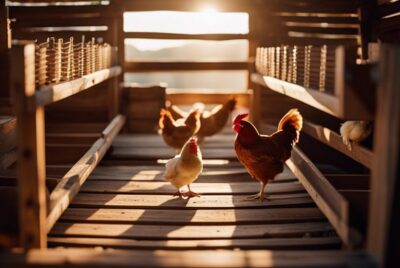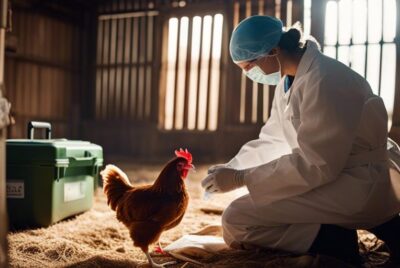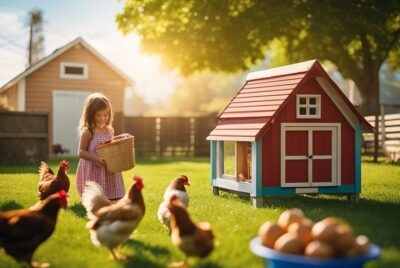Brooder Basics – Raising Chicks from Day One
Over the past few years, raising backyard chickens has become increasingly popular among both urban and rural dwellers. Starting with chicks is the foundation of a successful flock, and providing them with a safe, warm, and nurturing environment from day one is crucial for their health and development. In this blog post, we will cover all the essential brooder basics to help you confidently raise your chicks from the moment they hatch.
Setting Up Your Brooder
For many first-time chick owners, setting up a brooder can seem like a daunting task. However, with the right information and preparation, creating a safe and comfortable environment for your chicks can be easy and rewarding. In this chapter, we will guide you through the process of setting up your brooder to ensure that your chicks thrive from day one.
Choosing the Right Space
One of the first considerations when setting up your brooder is selecting the right space for it. The brooder should be placed in a draft-free area away from direct sunlight and predators. A spare room, garage, or shed can be ideal locations, as long as they can be easily monitored and cleaned. Make sure the space is well-ventilated to prevent ammonia build-up from the chicks’ droppings.
When choosing the location for your brooder, consider factors such as accessibility to power outlets for heat sources and proximity to a water source for easy refills. Additionally, ensure that the area is free from any potential hazards or obstructions that could harm the chicks, such as sharp objects or chemical spills.
Essential Equipment and Supplies
Any successful brooder setup requires essential equipment and supplies to cater to the chicks’ needs. The basic necessities include a heat source, such as a heat lamp or brooder heater, to maintain a consistent temperature of around 95 degrees Fahrenheit for the first week of the chicks’ lives. You will also need a feeder and waterer to provide food and water for the chicks, along with a suitable bedding material, such as pine shavings or straw, to keep the brooder clean and dry.
For instance, consider investing in a thermometer to monitor the temperature inside the brooder accurately. This tool will help you adjust the heat source as needed to ensure that the chicks are kept warm and comfortable at all times. Remember that maintaining the right temperature is crucial for the chicks’ health and well-being, so it’s essential to have the necessary equipment on hand from the start.
Creating the Ideal Environment
Clearly, providing the right environment is crucial when raising chicks from day one. Creating a brooder that meets their specific needs will ensure they grow healthy and strong.
Temperature Requirements
Ideal temperature requirements for chicks are essential for their survival and development. Here is a breakdown of the temperatures needed at various stages:
| Age | Temperature |
|---|---|
| 0-1 week | 95°F (35°C) |
| 2-3 weeks | 90°F (32°C) |
| 4-5 weeks | 85°F (29°C) |
| 6 weeks | 80°F (27°C) |
It is important to monitor the temperature regularly to ensure that it stays within the recommended range. Use a thermometer placed at the height of the chicks to regulate the heat source accordingly.
Light, Ventilation, and Bedding
Bedding should be clean, dry, and absorbent to keep the brooder clean and prevent health issues. Good options include pine shavings, straw, or shredded paper. Avoid cedar shavings as they can be harmful to chicks.
Adequate ventilation is crucial to ensure a fresh supply of air and prevent the buildup of harmful gases like ammonia. A small fan or openings in the brooder can help maintain good air circulation. Additionally, providing a source of natural light or a brooder light to simulate day and night cycles can help regulate the chicks’ growth and behavior.
Daily Care and Monitoring
Keep a close eye on your chicks from day one to ensure they are healthy and thriving. Daily care and monitoring are essential to raising happy and healthy chicks. By following these basic guidelines, you can provide the best start for your young flock.
Feeding Your Chicks
Monitoring the food and water intake of your chicks is crucial for their growth and development. Make sure to provide fresh water at all times, as dehydration can quickly become a serious issue. A diet of chick starter feed with a protein content of around 18-20% is recommended for the first few weeks of life. Offer feed in a shallow container to prevent spills and keep it clean to avoid contamination.
Health Checks and Common Issues
Regular health checks are vital to catch any issues early on. Watch for signs of illness such as lethargy, sneezing, or abnormal droppings. Common health issues in chicks include pasty butt, which is a blockage of poop around the vent area, and leg issues like spraddle leg or curled toes. Address any health concerns promptly to prevent further complications.
Feeding your chicks a balanced diet and providing a clean living environment are key factors in maintaining their overall health and well-being. In addition to monitoring their food and water intake, observe their behavior and appearance regularly to detect any potential problems. Seek advice from a poultry veterinarian if you have any concerns about the health of your chicks.
Growth and Transition
Now that your chicks have grown a bit and are ready for the next stage of their development, it’s important to be prepared for their transition to a coop. This step marks a significant milestone in their growth process and requires careful planning to ensure their well-being and safety.
Preparing for the Move to a Coop
Move your chicks to a coop once they are around 6-8 weeks old, depending on their size and feather development. Make sure the coop is secure from predators and provides adequate space for the growing birds. Introduce them to their new environment gradually, allowing them to acclimate to their surroundings before fully integrating them into the flock.
Adjusting Diet and Care as Chicks Mature
As your chicks mature, their dietary needs will change. Transition them from starter feed to grower feed, which is lower in protein but still provides the essential nutrients they need for healthy development. Monitor their growth and adjust the feeding regimen accordingly to prevent issues like obesity or nutrient deficiencies.
An important aspect of caring for maturing chicks is to provide them with appropriate space and enrichment. Ensure they have access to fresh water at all times and plenty of room to move around and exercise. Introduce perches or platforms for roosting, as well as nesting boxes for when they reach laying age.
Transition
Transitioning your chicks to a coop and adjusting their diet and care as they mature are crucial steps in raising healthy and happy chickens. By following these guidelines and being attentive to their changing needs, you can help ensure a smooth and successful transition for your growing flock.
Final Words
Considering all points discussed in this article, it is clear that understanding brooder basics is essential for successfully raising chicks from day one. By providing the right environment, temperature, food, water, and care, you can ensure the health and well-being of your chicks as they grow into strong and productive chickens. Remember to closely monitor the brooder conditions and adjust as needed, while also handling your chicks with care to promote trust and socialization. By following these brooder basics, you will set your chicks up for a bright and thriving future on your farm or homestead. Happy chick raising!



